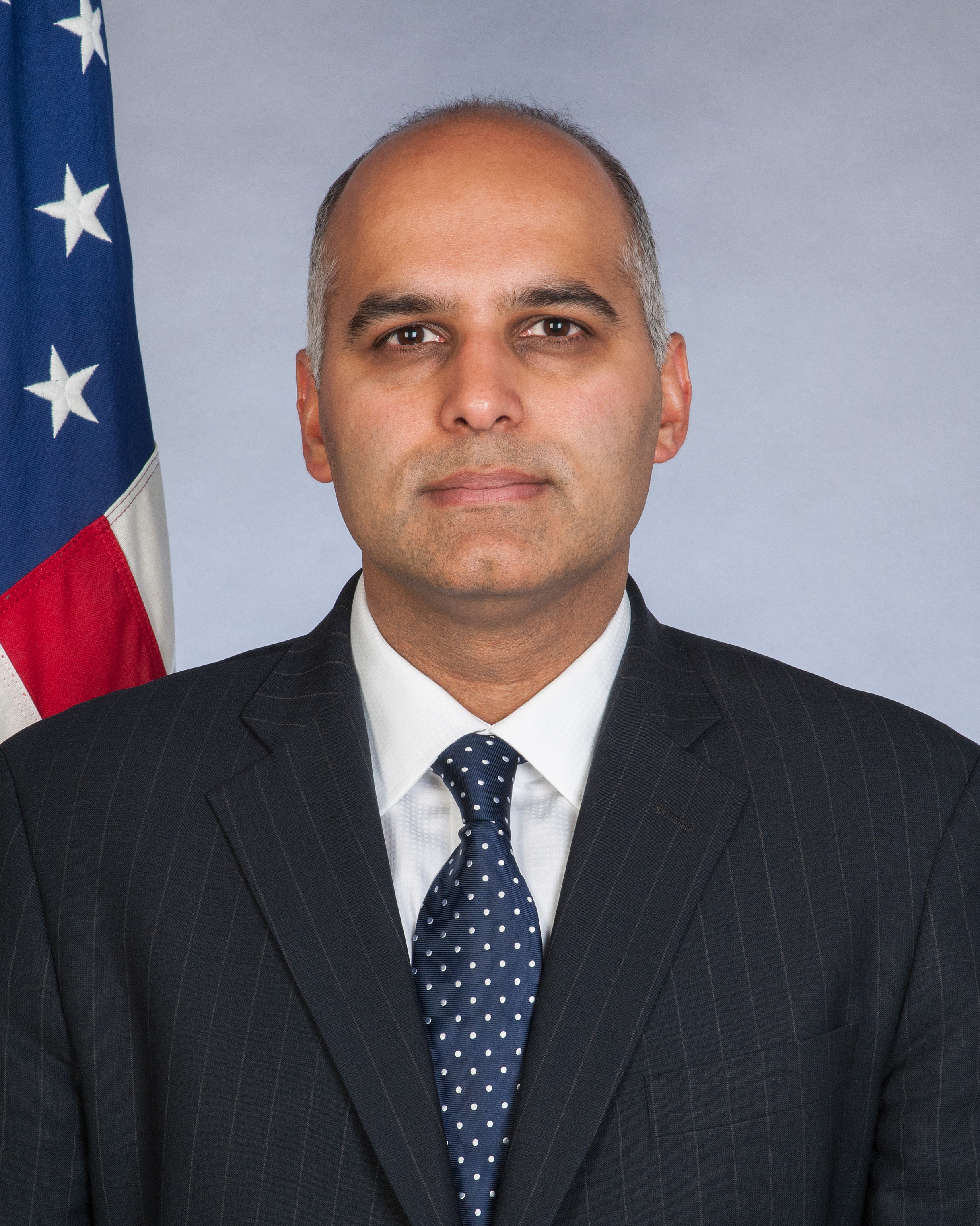- Home
- Agencies
- Department of Agriculture
- Department of Housing and Urban Development
- General Services Administration
- Department of Commerce
- Department of the Interior
- National Aeronautics and Space Administration
- Department of Defense
- Department of Justice
- National Science Foundation
- Department of Education
- Department of Labor
- Office of Personnel Management
- Department of Energy
- Department of State
- Small Business Administration
- Environmental Protection Agency
- Department of Transportation
- Social Security Administration
- Department of Health and Human Services
- Department of the Treasury
- U.S. Agency for International Development
- Department of Homeland Security
- Department of Veterans Affairs
- Goals
- Initiatives
- Programs
Primary tabs
Key to Changes
This text is Revised text
This word has been added to the text
This text is Last Published text
This word has been removed from the text
Modifed styling with no visual changes
Goal Overview
President Obama announced the National Export Initiative (NEI) in his 2010 State of the Union. This initiative aimed to renew and revitalize our efforts to promote American exports abroad. Exports have been a key driver in our nation’s economic growth. The United States has added 1.6 million new jobs since 2009 solely due to exports. Jobs related to exports pay up to 18 percent higher than jobs not related to exports. Earlier this year, the Department of Commerce released a report showing that U.S. goods and service exports supported more than 11.7 million jobs in 2014 – a new record. In May 2014, the Administration announced the launching of NEI/NEXT: a new customer service-driven strategy with improved information resources that will ensure American businesses are fully able to capitalize on expanded opportunities to sell their goods and services abroad. This initiative will build on the success of the NEI.
Today, a small percentage of America’s 30 million companies export their goods or services. Of the U.S. companies that do export, two-thirds export to only one country. Increasing this number, even by a small percentage, could have a big impact on the U.S. economy. EB has been a leading player in the U.S. government’s efforts to shape opportunities of American businesses overseas and one of our signature efforts is the "Direct Line" program.
The Direct Line program provides a unique opportunity for American businesses, particularly small- and medium-sized enterprises, to engage directly via teleconference or webcast with U.S. Ambassadors overseas at our 270 Embassies and Consulates in over 190 countries. Small and medium enterprises (SME) operating in a high-speed global marketplace need answers to their questions quickly. Quick access to accurate information is the cornerstone of Direct Line program. It is important to note that U.S. business, particularly SMEs, face considerable hurdles to enter overseas markets. This information will provide U.S. companies with tactical, on-the-ground information critical to market access and decision-making.
Strategies
To assist in America’s economic growth and as a core component of the Secretary’s Shared Prosperity Agenda to increase prosperity at home and abroad, EB is committed to providing information that will help U.S. businesses improve access to new and existing overseas markets for exports. With at least 96 percent of global consumers living outside the United States, exports are a great way to increase jobs and income here at home. Successful exporting requires accurate and up-to-the minute information on opportunities and market conditions abroad.
By increasing the number of calls, we seek to broaden and deepen the U.S. exporter base, as well as encourage current exporters to expand into new markets. Working in conjunction with the regional bureaus, EB will reach out to posts at the beginning of the fiscal year to get commitments for calls. Each region will have a target number of calls. Gaining commitments early in the fiscal year allows for flexibility in the actual timing of calls. Additionally, EB has created a wiki page for our U.S. missions to use as a guide for setting up a call and a SharePoint site that will help automate the requesting process.
Target topics will be major economic events and key growth sectors, in addition to topics suggested by the business community. By tailoring our topics to ensure interest and relevancy, we seek to increase business participation on the call. An increase in call participation will show that the information is both timely and valuable to U.S. businesses, in particular decision-makers. To increase advertisement of the program, we will work with our fellow U.S. government export-related agencies and the appropriate business associations to utilize their networks to promote Direct Line calls.
Progress Update
Overview
The Office of Commercial and Business Affairs (CBA) did not meet its FY 2016 Q4 targets.
Direct Line Calls: CBA set up five calls during Q4, which fell one short of meeting the quarterly target of six.
Direct Line Participation: For the second quarter in a row, CBA had an average of 44 participants per call, falling just short of the targeted average of 45 participants per call.
Explanation of Results
Direct Line Calls: CBA completed five calls in FY 2016 Q4, including from Casablanca, Ulaanbaatar, Muscat, Algiers, and one Washington, DC-based call. Despite increased interest in the Direct Line Program from overseas posts as a result of a concerted outreach effort by CBA leadership, CBA still fell one call short of its fourth quarter goal. Embassy Reykjavik’s scheduled Q4 call was postponed to FY 2017 Q1 to ensure that post had time to sufficiently advertise the call due to the limited size of the market.
Direct Line Participation: The more assertive marketing efforts implemented by CBA at the end of FY 2016 Q2 paid off as the average number of participants in Q4 remained strong. However, with only 14 participants, the call from Embassy Ulaanbaatar brought average participation rate of calls down to 44, just below the target of 45. Given that 49 people registered for the call, CBA feels that the late start time of the call (after business hours), necessitated by the time difference, likely contributed to the low participant turnout. Nonetheless, participants actively engaged with the post during the call and provided positive feedback afterward.
Challenges and Opportunities
Challenges: In FY 2016 Q4, CBA was able to implement its strategy to have CBA’s Special Representative reach out directly to Ambassadors at targeted U.S. embassies to request a Direct Line call. Although a large proportion of the posts responded favorably to the outreach, not all of them were able to schedule a call. Many scheduled calls during FY 2017 Q1.
Opportunities: The Special Representative’s outreach to Ambassadors appears to have had a positive effect on FY 2017 Q1, as some of the posts that were unable to schedule calls in FY 2014 Q4 have scheduled them for FY 2017 Q1. As a result, It appears that CBA will likely meet or exceed its FY 2017 Q1 target for number of Direct Line calls.
In addition, several posts that had successful calls in FY 2016 Q3 and Q4 have expressed interest in conducting follow-on calls during FY 2017 Q2 or Q3.
CBA has contracted PricewaterhouseCoopers to conduct a review of the Direct Line Program. The review is currently underway.
Changes to this Action Plan
State held a data-driven review (DDR) on its Outreach to U.S. Business APG in early September 2016. Since this is a new APG that was introduced in the FY 2016-2017 action plan cycle, this first year has served as a learning experience for CBA, which leads the APG. Items discussed at the DDR included challenges meeting the quarterly indicator targets and strategies for improving performance.
After analysis and taking into account factors such as the summer transition time, when posts often don’t have the appropriate resources/staff to commit to hosting direct line calls, CBA requested, and OMB and the PIC approved, to adjust the FY 2017 quarterly targets for the Number of Direct Line Calls indicator (see table below) and proposed more substantive milestones for FY 2017.
| Fiscal Year and Quarter | OId | New |
| FY 2017 Q1 | 5 | 6 |
| FY 2017 Q2 | 9 | 8 |
| FY 2017 Q3 | 9 | 9 |
| FY 2017 Q4 | 7 | 4 |
| Total | 30 | 27 |
Next Steps
| Quarter | APG Milestones |
| FY 2016 Quarter One |
|
| FY 2016 Quarter Two |
|
| FY 2016 Quarter Three |
|
| FY 2016 Quarter Four |
|
| FY 2017 Quarter One |
|
| FY 2017 Quarter Two |
|
| FY 2017 Quarter Three |
|
| FY 2017 Quarter Four |
|
So far, CBA has completed three calls for first quarter of FY 2017, with another four calls scheduled and four more in the pipeline. CBA is on track to meet or exceed the FY 2017 Q1 target.
CBA will evaluate the Direct Line Program and implement recommendations to improve the performance and/or efficiency of the program.
Contributing Programs & Other Factors
Contributing programs within the agency:
EB has established programs to highlight overseas opportunities and tenders for U.S. companies (Business Information Database System), support posts without a Foreign Commercial Service office (the Commercial Service-State Partner Post Program and the Business Facilitation Incentive Fund), and developed partnerships across the interagency and U.S. business community to drive the export agenda forward.
Additionally, EB helps countries build entrepreneurial ecosystems to support sustainable economic growth, counter violent extremism, and support vulnerable populations. We have set up councils (Poland-U.S. Innovation Program, Mexican-U.S. Entrepreneurship and Innovation Council), partnered with universities and non-governmental institutions, and built programs to support these efforts.
Our strength lies in our economic officers at our 270 Embassies and Consulates.
Contributing U.S. Government programs:
The National Export Initiative (NEI)/NEXT is implemented through the Export Promotion Cabinet and Trade Promotion Coordinating Committee, which consist of representatives from 20 federal departments and agencies with export-related programs.
No Data Available










